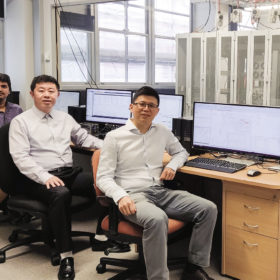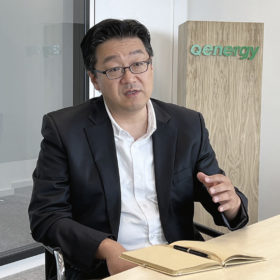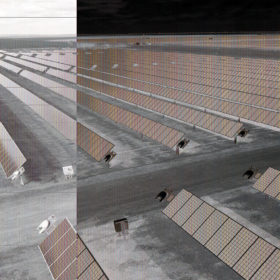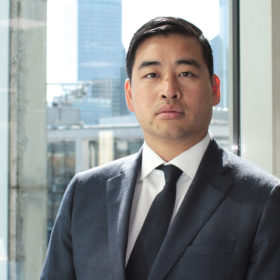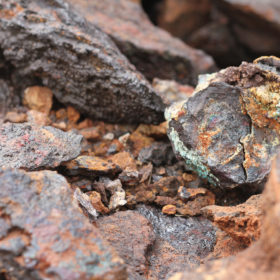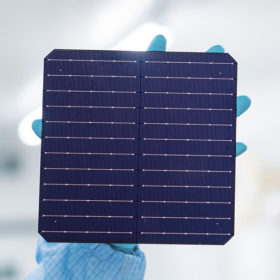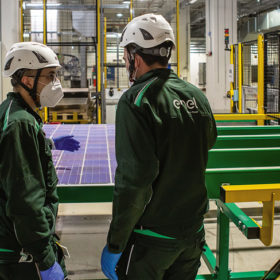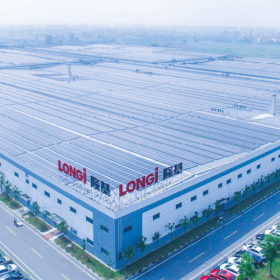In the testing loop
In northern Australia, a new hardware-in-the-loop platform is being developed to test renewable projects aggregated generation control systems before commissioning. The platform brings control hardware together with software simulations of passive components to test in real time how different configurations respond. Should the platform successfully complete its upcoming demonstration, it could help solve Australia’s current connection crisis.
Renewable solutions
South Korean industrial giant Hanwha launched its new Q Energy business over the summer, and is moving forward with an ambitious strategy of energy projects across the European continent. pv magazine caught up with Sang Chull Chung, CEO of Q Energy Group, for a look at its plans to accelerate deployment of renewables to alleviate Europe’s energy challenges.
Islands in the sun
Islandable microgrids are a growing niche, especially in remote regions at the end of electricity networks or parts of the world prone to natural disasters and outages. Renewably powered microgrids can provide a community with more stability and operate independently, so vulnerable regions are not reliant on distant sources of generation, as was the case during Australia’s Black Summer bushfires of 2019-20, when communities were left powerless. From California to Australia’s southern coast, the study and deployment of microgrids is on the rise. pv magazine’s Blake Matich takes a look.
Results are in: robotic uprising underway
A first-of-its-kind survey has revealed the extent to which automation and robot module cleaning is being adopted by large-scale PV project owners and operators. And the trend is clear; as solar expands geographically and projects grow, the use of robotics in solar O&M is increasing, and the level of understanding as to their benefits is on the rise. Ecoppia, a pioneer in the robotic cleaning segment, partnered with pv magazine on the survey and the results speak volumes.
From cost constraint to maximizing production
PV asset management is getting increasingly sophisticated, says Daniel Lui, the head of commercial performance for Wood Mackenzie Power and Renewables Energy Transition Group. Labor-market constraints are squeezing service providers and expectations for O&M are increasing in what is emerging as a period of maturation in how solar assets are handled post-construction.
Cobalt clings on
Cobalt is key for boosting energy density and battery life, but it comes with caveats: expensive, scarce, and linked to unethical mining practices, wild price fluctuations, and a tenuous supply chain. In recent years, battery manufacturers and automakers have intensified efforts to reduce or eliminate cobalt in lithium-ion cathodes. But sometimes, old habits die hard, as pv magazine’s Marija Maisch explains.
Copper is the new silver lining
As the PV industry scales to annual terawatt-level production to rapidly curtail the world’s emissions, it will become more challenging to continue the cost reduction trajectory. Increasing module production from current levels of 200 GW to 300 GW to several terawatts each year will consume significantly more material resources than the industry currently uses. This will require consideration of the additional materials to be sourced, writes Alison Lennon, chief scientist at Sundrive Solar and professor at the UNSW’s School of Photovoltaic and Renewable Energy Engineering.
Catalyst for an EU comeback
Plans for Europe’s largest-ever PV cell and module factory are taking shape, with equipment orders placed and a projected start date in mid-2024. Enel Green Power has received €118 million ($116.36 million) in funding from the EU Innovation Fund to support the project, out of a total €600 million investment. The EU is hoping it will catalyze further investment in similar projects, and start a high-tech comeback for European solar manufacturing.
The new players in China PV
China’s solar industry continues to grow rapidly, and new faces have begun to join the ranks of the industry’s biggest players. Although they come with new, unfamiliar names, they are aggressive and ambitious, and often bring surprisingly well-prepared investment plans and deep pockets. Who are they? What are they doing in the field? Vincent Shaw reports from Shanghai.
Supply stability
The solar manufacturing industry has seen rapid change in 2022, with supply chain vulnerabilities exposed and multiple regions looking to establish their own domestic manufacturing presence. pv magazine caught up with Insan Boy, vice president of global sales at module maker Seraphim, to discuss the issues of transparency, sustainability and technology that are quickly coming into focus.
